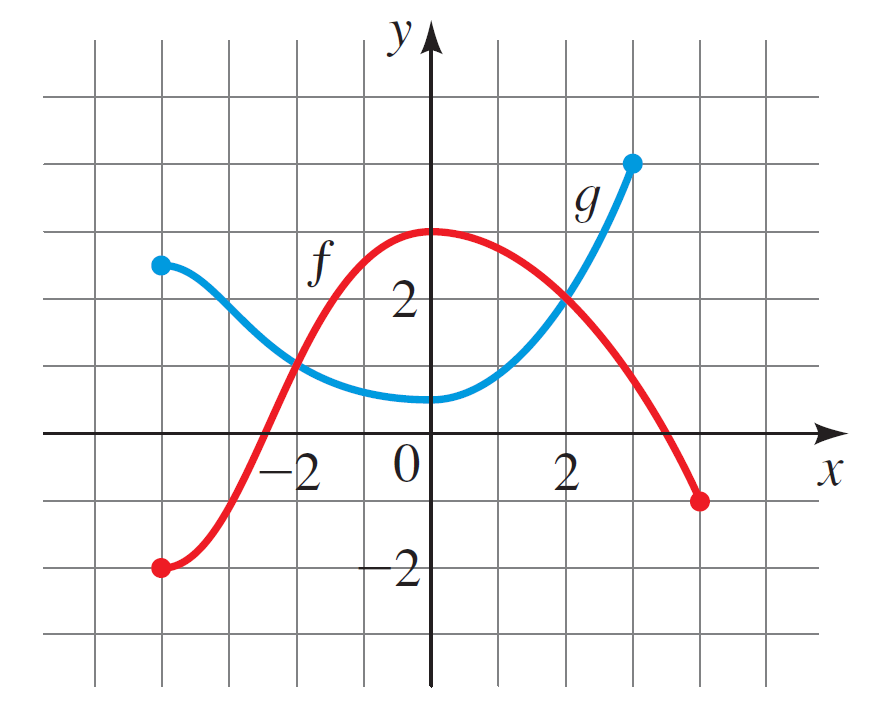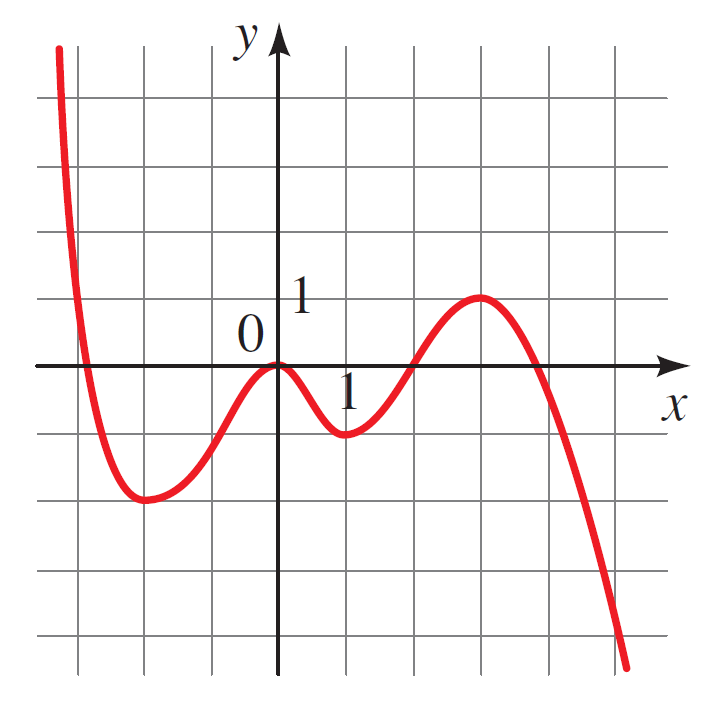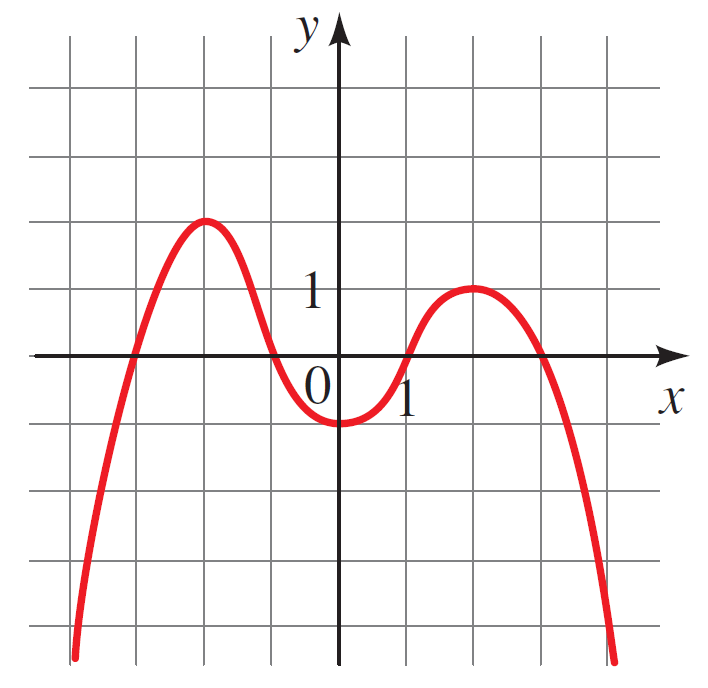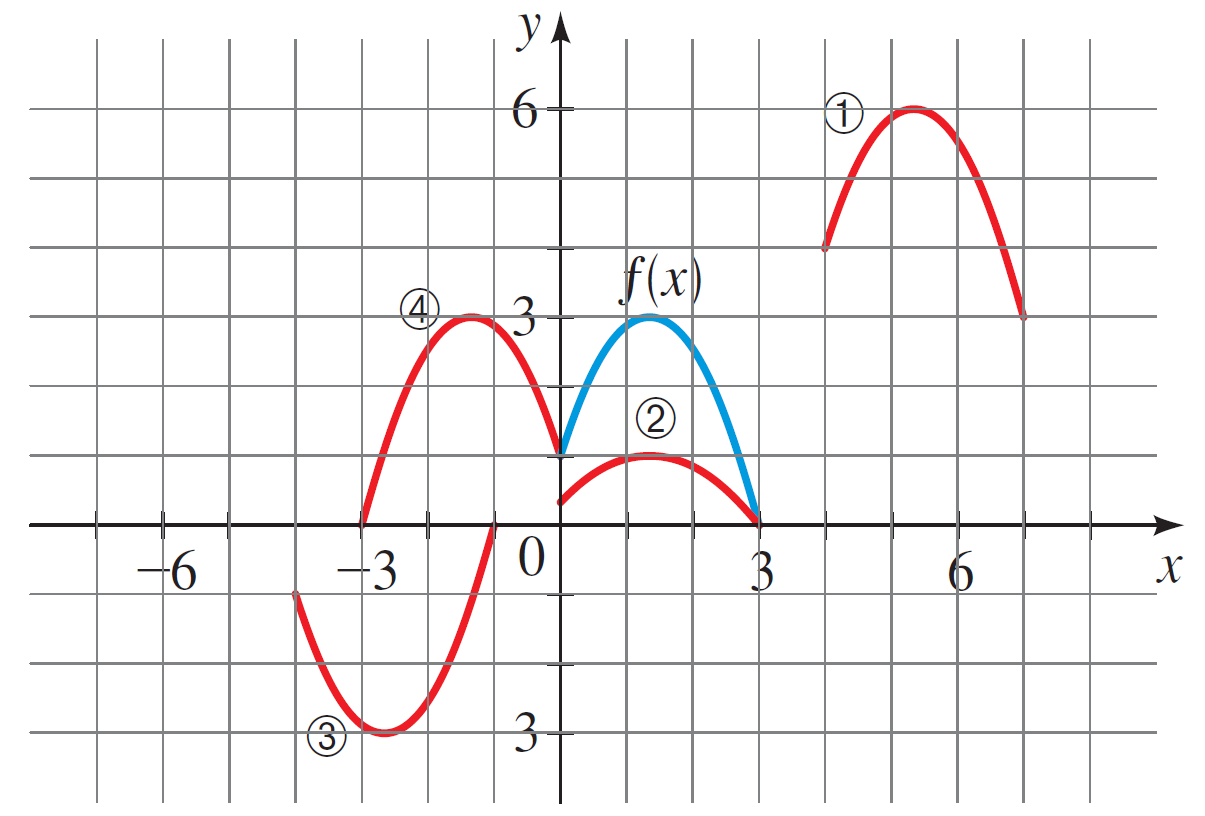Homework 6
Directions:
- Show each step of your work and fully simplify each expression.
- Turn in your answers in class on a physical piece of paper.
- Staple multiple sheets together.
- Feel free to use Desmos for graphing.
Answer the following:
- Given the two functions $f$ and $g$
- Solve the equation $f(x) = g(x)$.
- Solve the equation $f(x) < g(x)$.
- Solve the equation $f(x) \geq g(x)$.
- On what intervals is $f(x)$ increasing and decreasing?
- On what intervals is $g(x)$ increasing and decreasing?
- What is the local maxima of $f(x)$?
- Solve the following equations/inequalities with 1.5 methods or using the graph. You can use Desmos (but graph both graphs on the homework you will submit).
- $x - 2 = 4 - x$
- $x^3 + 3x^2 = -x^2 + 5x$
- $x^3 + 3x^2 < -x^2 + 5x$
- $16x^3 + 16x^2 = x + 1$
- $1 + \sqrt{x} = \sqrt{x^2 + 1}$
- Find the increasing/decreasing intervals and all local maxima/minima and the location at which they occur:
- What is the average rate of change of $f(x)$ on $(x, x + h)$ defined as?
- If a function has negative average rate of change on $(a, b)$, must it be decreasing on $(a, b)$? If not, draw a counterexample.
- Find the average rate of change for the following functions between the given values. Fully simplify when necessary.
- $f(x) = \sqrt{x}; \qquad (x, x + h)$
Hint Rationalize the numerator. - $f(x) = x^3 - 4x^2; \qquad (0, 10)$
- $f(x) = 3x - 2; \qquad (2, 3)$
- $f(x) = 1 - 3x^2; \qquad (2, 2 + h)$
- $f(x) = \dfrac{1}{x}; \qquad (x, x + h)$
- $f(x) = \sqrt{x}; \qquad (x, x + h)$
- Which transformations should be last?
- If I have a base function $f(x)$, explain in English what the following transformations will do to $f(x)$:
- $f(x + 2)$
- $f(-x)$
- $-f(x) - 3$
- $-f(-2x + 4)$
- $3-f\left(-\frac{1}{2}x + 2\right)$
- Suppose \[f(x) = \sqrt{x} \qquad g(x) = \sqrt{-x - 2} \qquad h(x) = \sqrt{- x + 2} \qquad i(x) = \sqrt{-(x + 2)}\]
- Is $g(x)$ horizontally shifted two units to the right from $f(x)$? Why or why not?
- Is $h(x)$ horizontally shifted two units to the right from $f(x)$? Why or why not?
- Is $i(x)$ horizontally shifted two units to the right from $f(x)$? Why or why not?
- Suppose \[f(x) = x^3 \qquad g(x) = \left(-x - 4\right)^3 \qquad h(x) = \left(-x + 4\right)^3 \qquad i(x) = (-(x+4))^3\]
- Is $g(x)$ horizontally shifted four units to the left from $f(x)$? Why or why not?
- Is $h(x)$ horizontally shifted four units to the left from $f(x)$? Why or why not?
- Is $i(x)$ horizontally shifted four units to the left from $f(x)$? Why or why not?
- Write out the list of transformations in the order needed to transform the parent function into $f(x)$.
- $f(x) = \sqrt{x + 4} - 3$
Hint Parent is $g(x) = \sqrt{x}$ - $f(x) = 2-(x-1)^2$
Hint Parent is $g(x) = x^2$ - $f(x) = 4 - \sqrt{-2x + 4}$
Hint Parent is $g(x) = \sqrt{x}$. Don't forget to factor out $-2$. - $f(x) = -2\lvert{-x - 1}\rvert + 3$
Hint Parent is $g(x) = \lvert x \rvert$. Don't forget to factor out $-1$.
- $f(x) = \sqrt{x + 4} - 3$
- For each red function, write out what the transformation from $f(x)$ should be:
- Graph the following functions using transformations. Include at least two transformed points and ordered of transformations you apply them in for full credit.
- $g(x) = \sqrt{x + 4} - 3$
- $g(x) = -(x-1)^2$
- $g(x) = -2 - \sqrt{-2x + 6}$
- $g(x) = -\lvert-2x - 2\rvert + 4$
- $g(x) = 2(-2x+6)^2 - 1$
- Suppose \[f(x) = 2x^2 + x \qquad g(x) = x^2 - x \qquad h(x) = x^2 - 1 \qquad k(x) = x^4\] Evaluate and expand the following:
- $f(x) + g(x) + h(x)$
- $f(x) - g(x)$
Hint Look at how many terms you are substituting. Don't forget...
- $g(x)h(x) - k(x)$
- $f(x)\left[k(x)\right]^2$
- $\dfrac{g(x)}{h(x)}$ (also find the domain).
- Find and simplify the formula for $h(x)$.
- What are the $x$-values of the holes in $h(x)$?
- What is the domain of $h(x)$?
- $\dfrac{g'(x)f(x) - f'(x)g(x)}{\left[g(x)\right]^2}$
Hint Look at how many terms you are substituting. Don't forget... - $f'(x)g(x) + f(x)g'(x)$
Hint Expand because like terms are created.
- $f\circ g$
- $f(g(0))$
- $g \circ f$
- $f \circ f$
- $g \circ g$
- $f \circ f \circ f$
Choosing $f(x) = x$ or $g(x) = x$ is zero credit for this problem.
- $F(x) = (x-3)^4$
- $F(x) = (2x-3)^{-\frac{1}{2}}$
- $F(x) = \sqrt{1 - \sqrt{x}}$
- $F(x) = \sqrt{(x^2 + 2x + 3)^3}$



